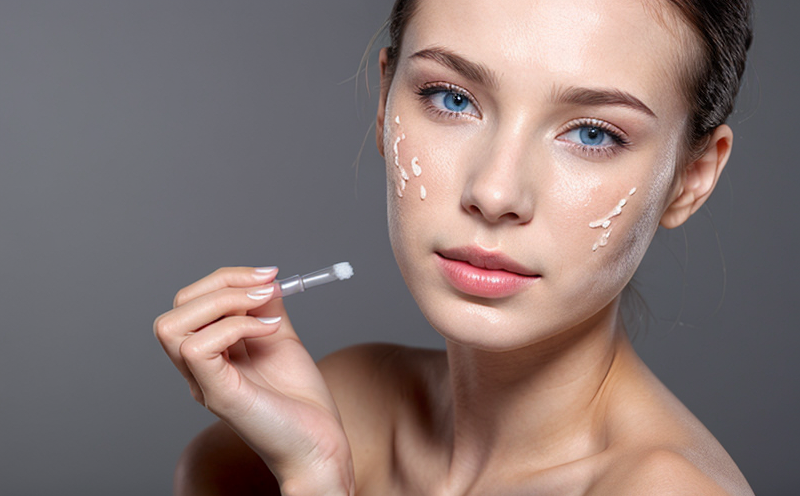Sensitization Testing for Cosmetic Colorants
In the cosmetics industry, colorants play a crucial role in enhancing product aesthetics. However, not all individuals react similarly to these additives; some may experience adverse reactions such as skin irritation or sensitization. Sensitization testing is a critical step ensuring that cosmetic products are safe for use by the general population.
The primary purpose of this testing is to identify potential allergens within colorants that could cause sensitization in users. This is particularly important given the increasing trend towards natural and synthetic colorants, many of which may have previously untested allergenic properties.
Regulatory bodies such as the European Union's Cosmetic Regulation (EC 1272/2006) require that all new cosmetic ingredients undergo safety assessments before market release. Sensitization testing helps meet these regulatory requirements by providing data on potential allergens, ensuring compliance with international standards like ISO and EU regulations.
Understanding the mechanisms behind sensitization involves examining how certain chemicals interact with human skin cells. The process typically includes in vitro tests using cell cultures or ex vivo tests utilizing excised human skin samples. These methods allow researchers to observe immune responses without exposing humans directly, making them both safe and efficient.
The testing procedure generally starts by preparing the colorant sample according to specified protocols outlined in relevant standards documents. Once prepared, it is then applied to the test system under controlled conditions over a defined period. After exposure, various biological markers indicative of sensitization are measured quantitatively or qualitatively.
The results from these tests serve multiple purposes: they inform developers about the safety profile of their products early in development stages; they support regulatory submissions when applying for market authorization; and finally, they contribute to ongoing monitoring efforts aimed at improving overall product safety profiles.
By conducting thorough sensitization testing on cosmetic colorants, manufacturers can reduce risks associated with potential allergens while enhancing consumer trust through transparent communication about product safety. This proactive approach not only protects public health but also fosters brand loyalty and market competitiveness within the highly competitive global cosmetics industry.
Scope and Methodology
| Methodology Component | Description |
|---|---|
| Skin Patch Testing | This involves applying the colorant to small areas of skin and observing for any adverse reactions over a prescribed time frame. |
| In Vitro Models | Utilizing cell cultures or isolated human tissues to assess immune responses without exposing subjects directly. |
| Ex Vivo Skin Testing | Performing tests on excised skin samples from cadavers, providing a more realistic simulation of live tissue behavior. |
| Allergenicity Assessment | Evaluating the likelihood that individuals might develop an allergic reaction upon contact with the colorant. |
| Quantitative Analysis | Metrically measuring biological indicators such as cytokine levels or histamine release to quantify sensitization effects. |
Industry Applications
The application of sensitization testing is widespread across various segments within the cosmetics industry. For instance, it ensures that newly developed colorants meet stringent safety criteria required for formulation into skincare products or makeup items.
Moreover, companies engaged in reformulating existing products to comply with evolving regulations will benefit significantly from comprehensive sensitization testing. This helps them avoid costly recalls and potential legal issues associated with non-compliance.
R&D teams also leverage this service during early stages of product concept generation, allowing for informed decisions regarding ingredient selection based on their known or suspected allergenic properties.
Finally, manufacturers seeking to expand into new markets must ensure their products meet local regulatory requirements. Sensitization testing provides the necessary data to demonstrate compliance with these standards effectively.
Environmental and Sustainability Contributions
The practice of conducting sensitization testing contributes positively to environmental sustainability efforts in several ways. Firstly, it reduces unnecessary animal testing by favoring alternative methods like in vitro or ex vivo techniques over traditional live-animal experiments.
Secondly, this service encourages the use of safer and more sustainable ingredients throughout cosmetic formulations. By identifying potentially harmful additives early on, companies can replace them with eco-friendly alternatives, thereby lowering environmental impacts associated with waste generation and resource depletion.
Lastly, ensuring product safety through rigorous testing fosters consumer confidence in environmentally responsible practices adopted by the cosmetics industry. This ultimately leads to increased demand for sustainable products, driving further innovation towards greener manufacturing processes and packaging solutions.





